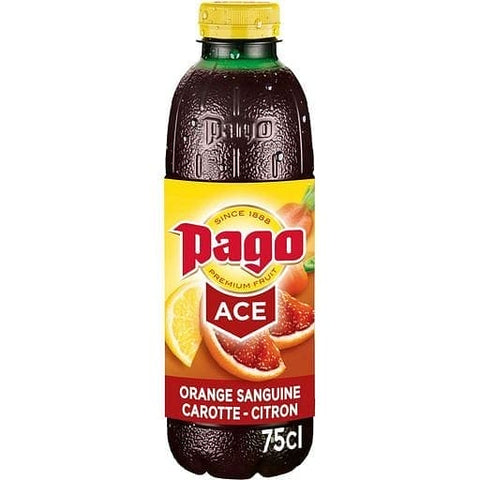La Salade Niçoise is a French salad made of tomatoes, hard-boiled eggs, Niçoise olives, and anchovy filets, typically dressed with olive oil. Other common ingredients include tuna (canned or fresh), onions, garlic, green beans, capers, and artichoke hearts. The salad originated in the French city of Nice and is traditionally made with raw vegetables, though there are variations with cooked vegetables or fish.
The original salad was made without anchovies or lettuce. The addition of these ingredients may have been influenced by the popularity of Caesar salad in France during the 1930s and an increase in the availability of canned tuna and New World produce.
Why is it called Niçoise salad?
Like many other French dishes, the Niçoise salad was inspired by the ingredients that were readily available to the chef who invented it. The dish's history is clouded by legend, but it's commonly thought to have been created by a chef in Nice, France, named Bigot. Some sources say Jean Bigot made the dish in 1860; others say it was Andre Bigot in 1903. Still, others believe that Carles invented the dish at the Hotel de Paris in Monaco. We know that the salad's name comes from Nice because when it first appeared on menus in both Nice and Paris, it was called Salade Niçoise (the French word for "Niçoise").
Another popular theory is that the salad got its name from its key ingredient from Britannica website:
- The Latin word for anchovy is "Engraulis encrasicolus"; when shortened to "encras" and combined with "Niçoise," you get "encras Niçoise," which translates to "Niçoise stews." One particularly popular stew known as ragout Niçoise was made with vegetables and fish and served over
The Niçoise Salad has become so popular that it's hard to believe it was once a relatively unknown dish. But, seriously, how could something this tasty have been left in the dark for so long?
Unfortunately, there is a lot of misinformation about Niçoise Salad out there, and if you are a true foodie, you probably have run across some of it. So we're going to set the record straight and tell you everything we know about the origins of this dish.
Salade Niçoise is originated in Nice
Salade Niçoise is one of the most popular summer salads. But have you ever wondered where it originated from?
- The salad's origins can be traced back to Nice in the south of France. Nice is known as the capital of the Côte d'Azur, which means "Coast of Blue" in French.
- This area has a Mediterranean climate that produces abundant fresh vegetables in the salad, such as tomatoes, lettuce, and green beans. The salad also features boiled potatoes and black olives, both grown in the region.
- The olive oil used in Salade Niçoise is also produced locally. The French Riviera's olive trees have some of the best olive oil in France.
Origin of Salade Niçoise
The Salade Niçoise is a salad made of tomatoes, hard-boiled eggs, Niçoise olives, anchovies, and dressed with olive oil. Other ingredients may include tuna, green beans, and lettuce. The first recorded description of its recipe was in 1894.
The Salade Niçoise is a traditional meal in the Provence region of France. It became popular in the United States in the 1920s when French chef Jean Orsi introduced it at his restaurant in San Francisco. However, it was first described as a lunch dish made with canned tuna in the 1930s. Since then, recipes for Salade Niçoise have appeared in many cookbooks and magazines.
The name "Salade Niçoise" refers to Nice, the capital city of the Alpes-Maritimes department on the French Riviera. This region is known for its mild climate and abundance of sunflowers, olive trees, herbs, and vegetables used in many traditional dishes.

Popularity of Salade Niçoise in UK
The most difficult aspect of researching this question has been determining when salad first became popular. It is a word with many meanings, and its popularity as a foodstuff has waxed and waned considerably over the last two centuries. When I first began looking at historical recipes for salads, I was surprised to find that many were sweet dishes, and others were made from meat or seafood – things you would never think of as salads today and try the recipe with the help of bbcgoodfood website
Most people think that salads are a modern invention and that it is only in the last few decades that we have started to eat them. But it wasn't always like this as, until the end of World War 2, salads were virtually unknown in Britain.
They were only meant to be eaten by the very rich and no one else. So they didn't become popular until the 1950s, when people grew their vegetables and herbs in their gardens.
There were two types of salad in particular that were popular at this time;
- Lettuce and tomato – both of which could be grown easily at home. The lettuce salad was very simple, consisting just of iceberg lettuce leaves with a dressing made from olive oil, vinegar, and salt.
- The tomato salad was made from ripe tomatoes (often mixed with cucumber) dressed with mayonnaise.
The next major change came about in the 1970s when supermarkets began to sell a much wider variety of fresh ingredients such as
- Peppers, radishes, carrots, and beetroot, which meant people, could make more interesting salads than before.
- Another change was that people began to eat out more often at restaurants that served food from other countries. This meant there was greater demand for Caesar Salad (a mixture of lettuce leaves with chicken.
Salade Niçoise is often made up of Salad Greens
- The first layer of a composed salad is usually the salad greens. This can include lettuce, spinach, kale, and other leafy greens.
- The second layer is often made up of the main ingredients of the salad. These can be chopped vegetables and fruits, such as tomatoes, cucumbers, or fruit slices. If chicken or meat is used in the salad, they are also included within this layer.
- The third layer is made up of dressing and other garnishes or toppings intended to add flavor to the dish. Popular garnishes include croutons and cheese.
- The base layer of a composed salad is typically made up of greens such as iceberg lettuce or mixed baby greens, although it can also be made with grains and other ingredients. The base layer of your composed salad can be anything you like, and it depends on what kind of dish you are trying to make.
- Other than the base layer, a composed salad usually has a protein layer that may consist of meat, fish, poultry, or tofu. It also has an accent layer that may include grated cheese, nuts or seeds for crunchiness and flavor. Finally, the dressing used in a composed salad ties all the ingredients together.
First Dressing of Salade Niçoise
The first salad dressing was most likely vinegar and oil. According to The History of Salad Dressing, it is believed that the earliest civilizations used olive oil for dressing salads. However, the Romans have brought vinegar with them wherever they went, using it to dress their salads.
The Greeks may have invented the first vinaigrette, a mixture of vinegar and oil that they seasoned with herbs and spices. According to History, the Romans brought mustard to Europe when they invaded England in 55 B.C. when mustard became part of the European diet.
In order of popularity, the top-selling salad dressings in the UK were Italian, Ranch, Thousand Island, French, and Blue Cheese. These same dressings are still popular today, although other varieties such as poppy seed and honey mustard are selling well also.
Creamy Dressings of Salade Niçoise
The concept of dressing dates back to ancient times. At first, the dressing was a simple blend of ingredients used as a marinade or to flavor food during cooking. However, it was not until the 19th century that the salad dressing we know today came into existence.
- The first bottled salad dressings were sold in the early 1900s, and by the 1950s, Kraft Foods had become a national brand.
- Today, salads are more than just a side dish; they can be the main course. With so many different kinds of vegetables and fruits available, you can create a salad with almost any taste or texture you would like.
- From sweet to savory, there is sure to be a salad that will satisfy your appetite! The key is choosing which type of dressing will complement your greens best.
There are several salad dressings:
- Oil-based dressings (such as mayonnaise)
- Cream dressings (like sour cream)
- Vinaigrettes
- Buttermilk ranch dressing
All these different types have their unique taste and texture, so it's important to choose one that works well with whatever salad you're going to enjoy!
The word "salad" comes from the Latin word for salt. This is true for many foods today, like salt and pepper. There were no refrigerators or freezers at this time, so food had to be preserved by other means, or it would spoil quickly.
This is where the use of oil came into play. Oil had several services in Roman times:
- It was used in cooking and medicinal properties.
- Oil was used to seal wounds, prevent infection, and treat minor ailments like rheumatism or toothache.
The ancient Egyptians were also aware of this medicinal use of oil, which led to its widespread use as a preservative in their culture. Egyptian doctors would prescribe olive oil mixed with vinegar to treat various ailments, including stomach cramps, indigestion, constipation, and arthritis pain, among others.
How to make perfect Salade Niçoise
To make the perfect Salade Niçoise,
- Start by boiling potatoes and eggs. Next, blanch the green beans for 3-4 minutes in a separate pot, and then rinse them in cold water to cool them. Meanwhile, put the tuna in a bowl with olive oil and pepper.
- Slice the tomatoes in half, and then slice the potatoes into 1/2" rounds. Please put all of them in a large bowl along with the boiled eggs, anchovies, and olives. Then, add the tuna, tomatoes, and green beans. Please make sure you stir everything gently to combine it without breaking up the tuna too much.
Finally, make a dressing by whisking together mustard, vinegar, and olive oil in a small bowl. Drizzle this over your salad and season to taste with lemon juice and salt.
While the origins of this dish are somewhat murky, this classic French salad recipe is a great way to celebrate the summer.
This salad is traditionally made with tuna, hard-boiled eggs, and potatoes, but we've added our twist by adding green beans and an anchovy dressing.
- Cook the beans in boiling salted water for 3 mins until just tender. Drain and leave to cool.
- Meanwhile, cook the potatoes in boiling salted water for 15 mins or until tender, then drain and leave to cool.
- Make the dressing by whisking together all ingredients with some seasoning.
- Divide the lettuce between 2 large serving plates and arrange the remaining ingredients over the top, drizzle with half of the dressing, then serve with crusty bread and more dressing on the side.
A good Salade Niçoise is a thing of beauty
Here's our guide to the perfect French salad:
- Choose your ingredients carefully. Salade Niçoise features few ingredients, so every element plays a crucial part. The tuna should be top-notch, preferably line-caught, and packed in olive oil. Wake up the flavors with anchovy fillets, salty capers, and crispy green beans.
- Please keep it simple. You don't need a fancy dressing for this dish and drizzle the salad with olive oil and red wine vinegar or lemon juice, season with salt and pepper, then toss gently.
- Add hard-boiled eggs to give the dish some bite.
- Layer the salad carefully on a large platter, visible all the elements. Tomatoes should complement the top layer of flavorful tuna and boiled eggs beneath, and then fill in any gaps with black olives and capers to complete the look.

![Salade Nicoise: Everything You Wanted To Know [The Perfect Guide]](http://monpanierlatin.co.uk/cdn/shop/articles/salade-nicoise_1280x.jpg?v=1647464167)


